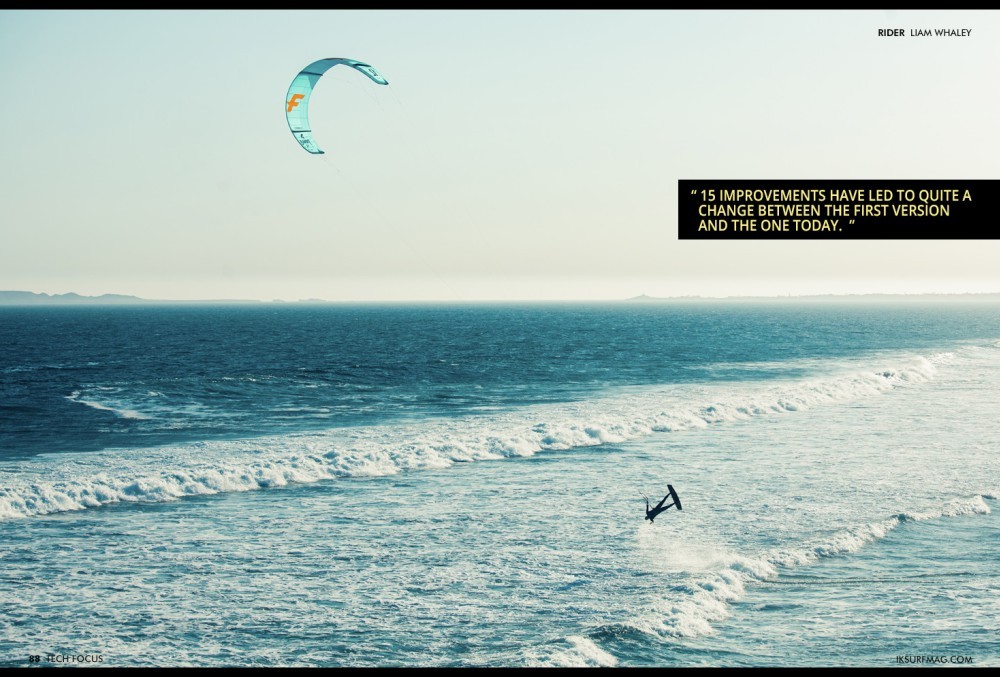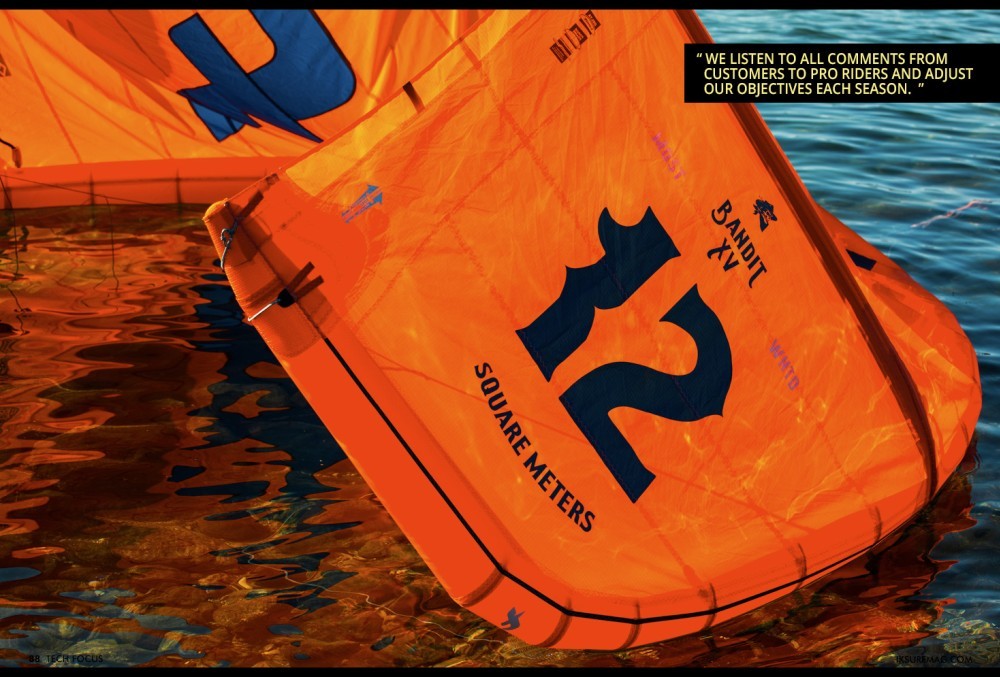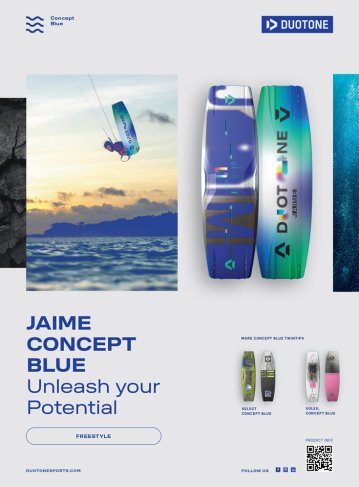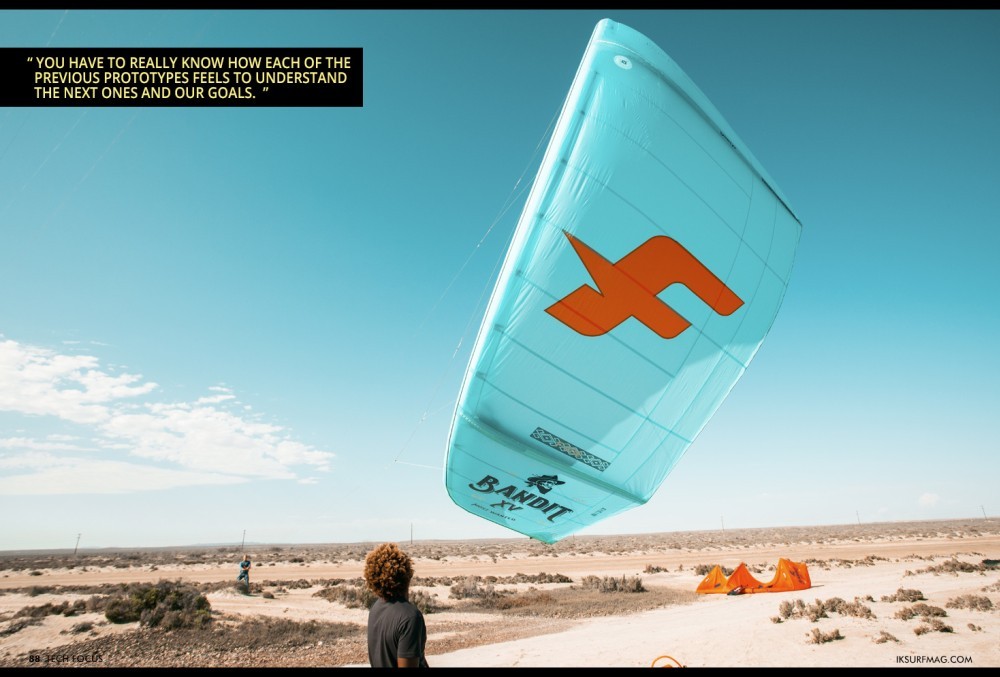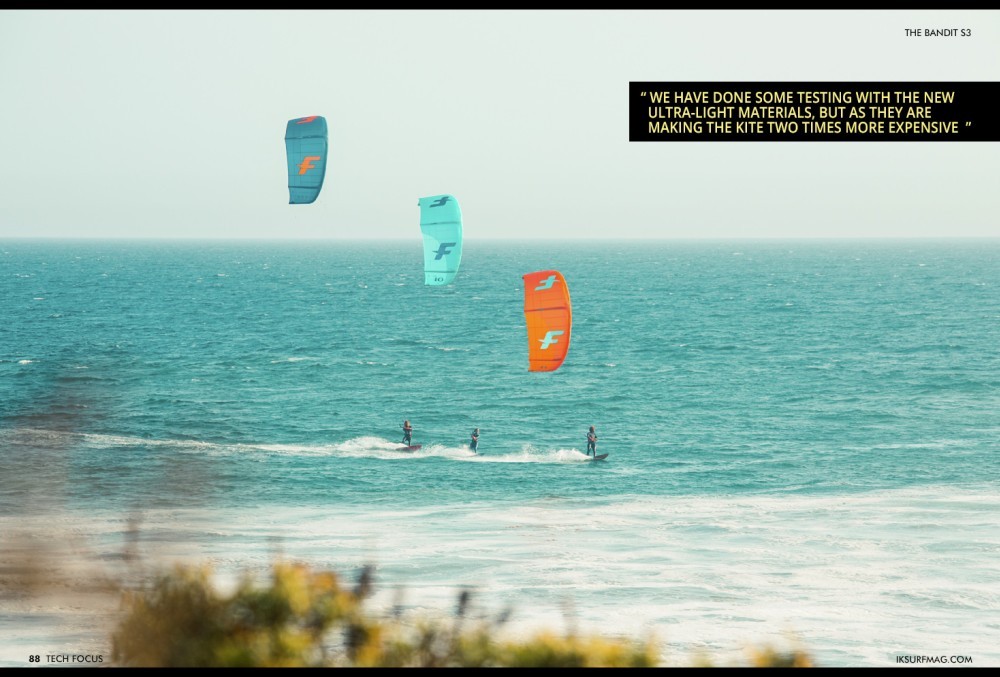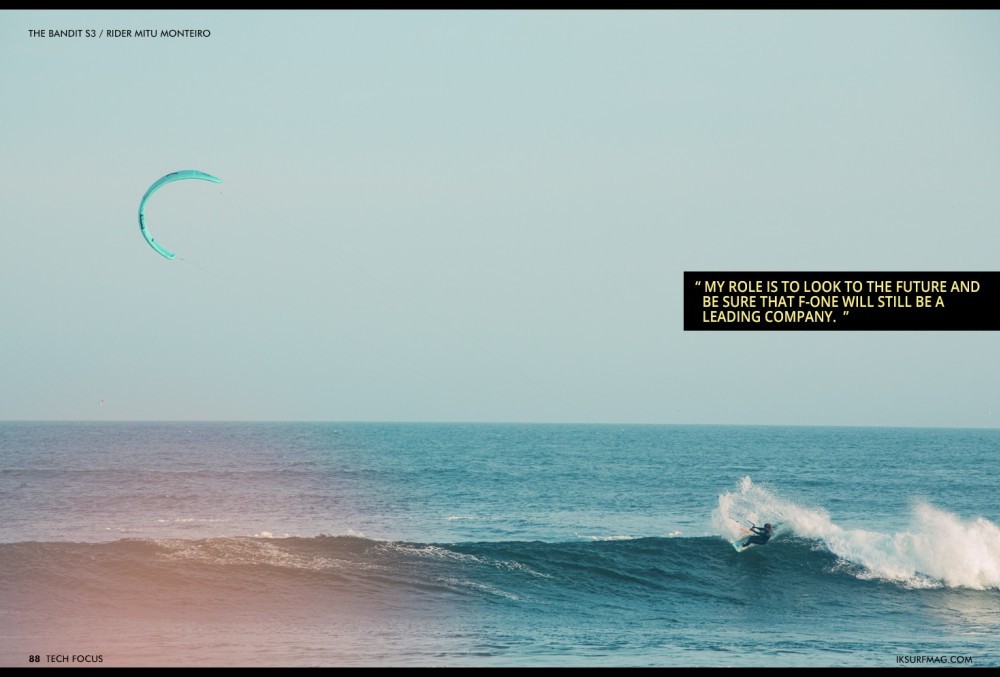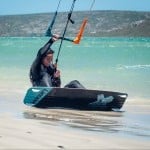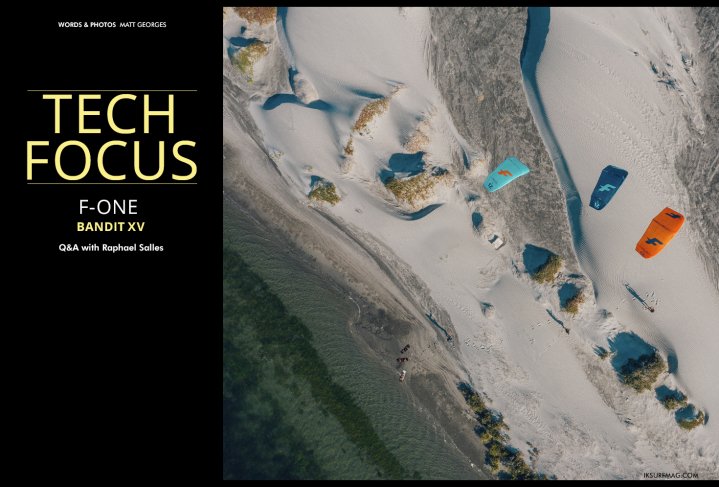
Tech Focus: F-ONE BANDIT XV
Issue 88 / Mon 9th Aug, 2021
One of the most iconic kites ever made, the F-ONE BANDIT, has reached its 15th birthday. The new BANDIT XV has just been announced, and we’ve got the inside scoop!
Raphael, thanks for joining us. What an exciting launch and a special moment for your team. Wow, 15 years of the BANDIT - congratulations! From the very first version to the exciting new release, how much has changed?
Yes, it is quite incredible that it’s been such a long time, and it went by so fast! The original Delta C shape patent is still used in the BANDIT XV, and this patent is the only design patent still valid today in the kite world. There are a lot of patents on accessories but not on pure kite design. A lot has changed since the V1 in 2007. We were able to follow every trend in our sport with the BANDIT and even turn it into two models with an S series for strapless and surfing. Its main purpose has been to follow our customer’s needs. Every year we were able to improve the BANDIT by quite a lot, so 15 improvements have led to quite a change between the first version and the one today.
What was the inspiration behind the original BANDIT design?
The wind range has always been our main goal because, in south France, the wind can be so gusty and changes force during your session. You can start in 20 knots and end your session in 30 knots. The goal of the Delta design was to offer maximum stability with full depower, and it appears to be perfect with the auto relaunch. Still, today the wind range is an important part of our goals.
We see you’ve gone full western with the release of the BANDIT XV! Where does the name come from?
It was nice to go back to the western universe and the “Most Wanted” theme. It’s so difficult to choose a name, but I guess this kite model was there to create a hold up on the kite market, and it did! So the BANDIT name has been fitting well!
What were the design goals for the new BANDIT XV? Can you tell us a bit more about what features we can look forward to?
The goals for the BANDIT XV were to improve ease of use and try to maximise comfort and performance in all wind ranges. You know you have a kite that is working well if it flies not only in 5 knots but also in 15 knots. The easiness and bar feeling that make you a better pilot and kitesurfer are the key. You are already a better pilot with better sensations only a few minutes after using the BANDIT XV. You can have success with tricks that you didn’t think you could land! The stability while flying or on the beach has also improved, so you feel more confident and don’t realise that the wind has been as gusty as it truly is. We have given more importance to the big air discipline as well, with higher jumps and improved kite loops.
The changes that are visible are the double vertical panel on the trailing edge that offers a better load distribution of the tension and allows for better control of the profile on the trailing edge of the kite. On the BANDIT XV, we have changed the trailing edge reinforcement as well to a more clean profile. We have adjusted the profile to these new features and worked on leading-edge diameter and fine-tuning the bridles. It’s fantastic every year to work on a design that you know so well.
It is known across the kiting community that BANDIT riders are fiercely loyal! How has feedback from the consumers helped drive the design of this kite?
Our customers are quite loyal, and we sometimes learn more from riders who do not like the BANDIT than from those who love it. We listen to all comments from customers to pro riders and adjust our objectives each season.
What does it look like behind the scenes of putting together a kite like this? How many people are involved in getting this product to market?
We are four people behind the scenes now; Robert, our kite designer, and Mika, who has been my partner in testing since the 1st model, so 15 years together! For two years now, Paul Serin has also been helping us with testing. It takes about 80 prototypes and an entire year process with many, many days on the water in all kinds of conditions to reach the final version.
How important was the feedback from your team riders in the final tuning of this kite?
When you do 35 prototypes of the 9m before starting with the other sizes, only the test team and I can test and give feedback. Each prototype is just a step to the next one and not the final design. You have to really know how each of the previous prototypes feels to understand the next ones and our goals. When it is final, then we can get feedback from our different team riders and know if we were right or not. This year the feedback from Liam in the big air discipline has been really good!
Alongside the launch of the BANDIT XV is the BANDIT S3, which is the surf and strapless freestyle offshoot of the original. What drove the decision to create a separate surf model?
After so many years, it was more and more difficult to satisfy all our riders and customers, so we felt the need to have a wave riding model, still with the fantastic wide range of use of the BANDIT. Jumping high and doing a kite loop or cruising was taking the kite further away from the handling and light feeling needed for a wave riding kite. So we have decided to have two ranges. The S is using the Delta C shape and many aspects of the original BANDIT. The smaller BANDIT sizes (4, 5, 6, and 7m) were already wave oriented for quite a while, so it was natural and logical to expand those designs into the bigger sizes for more of a surf feel. This year, the BANDIT S3 goes up to 11m, and Mitu was quite happy when he was testing the kite during the shoot!
What’s new with the BANDIT S3? Tell us a bit more about the new features!
On the BANDIT S3, we have followed the same goals for improved stability because when you ride in waves or strapless, you need a lot of control. Wind range is also essential because you mainly ride in storms in Europe. The pull from the S seems to disappear during your surf, so it gives you a lot of freedom to edge and do your carves and turns. The handling of the kite, while depowered with not much tension on the back lines, is better so you can steer it without any pulling. It’s important in onshore conditions where you always need your kite to follow your turns.
Taking a look across the industry, it’s clear that lighter is the new black! There’s noticeably less dacron on the latest models. Has this been done intentionally to reduce weight? How does this affect the characteristics of the kite?
Weight has always been a priority, and the BANDIT is already quite light, even lighter than some of the new models of kites out there with lightweight, expensive materials. In the past 15 years, we have reduced the leading edge diameter to the minimum to reduce weight and optimise every reinforcement. For the past few years, we use three different materials, the Tecno Force 52gr canopy, a 155gr Dacron, and a 130gr Dacron as well. This allows us to have the best combination of material across the kite.
We have done some testing with the new ultra-light materials, but as they are making the kite two times more expensive, we still need to determine if it makes the kite two times better or not!
Looking back at 15 years of an impressive kite design that has seen incredible success in the industry, how does it feel to have hit this milestone?
With the recent change in our sport and wing foiling exploding suddenly, and of course, the Covid pandemic, there is not much time to look back on the past! My role is to look to the future and be sure that F-ONE will still be a leading company. Our past has shown how far we have come and what we have achieved.
By speaking with some of our customers, we know some had the feeling that our recent success in the wing market might pull us back a bit from the kite market. With the launch of the BANDIT XV and S3, and their performance, we have shown that our energy and motivation is still the same.
The team at the office is doing incredible work to manage the kite and wing product lines, and one thing we could not plan is another anniversary: This summer, it will be my 25th year of kitesurfing. Yes, I’m kitesurfing since August 1996!
Thank you for all the behind the scenes insights on the BANDIT, Raphael!
Thank you so much, Crystal!
By Crystal Veness
Editor at IKSURFMAG, Crystal Veness hails from Canada but is based in South Africa. When she isn't busy kitesurfing or reporting on the latest industry news for the mag, she is kicking back somewhere at a windy kite beach or working on creative media projects.




